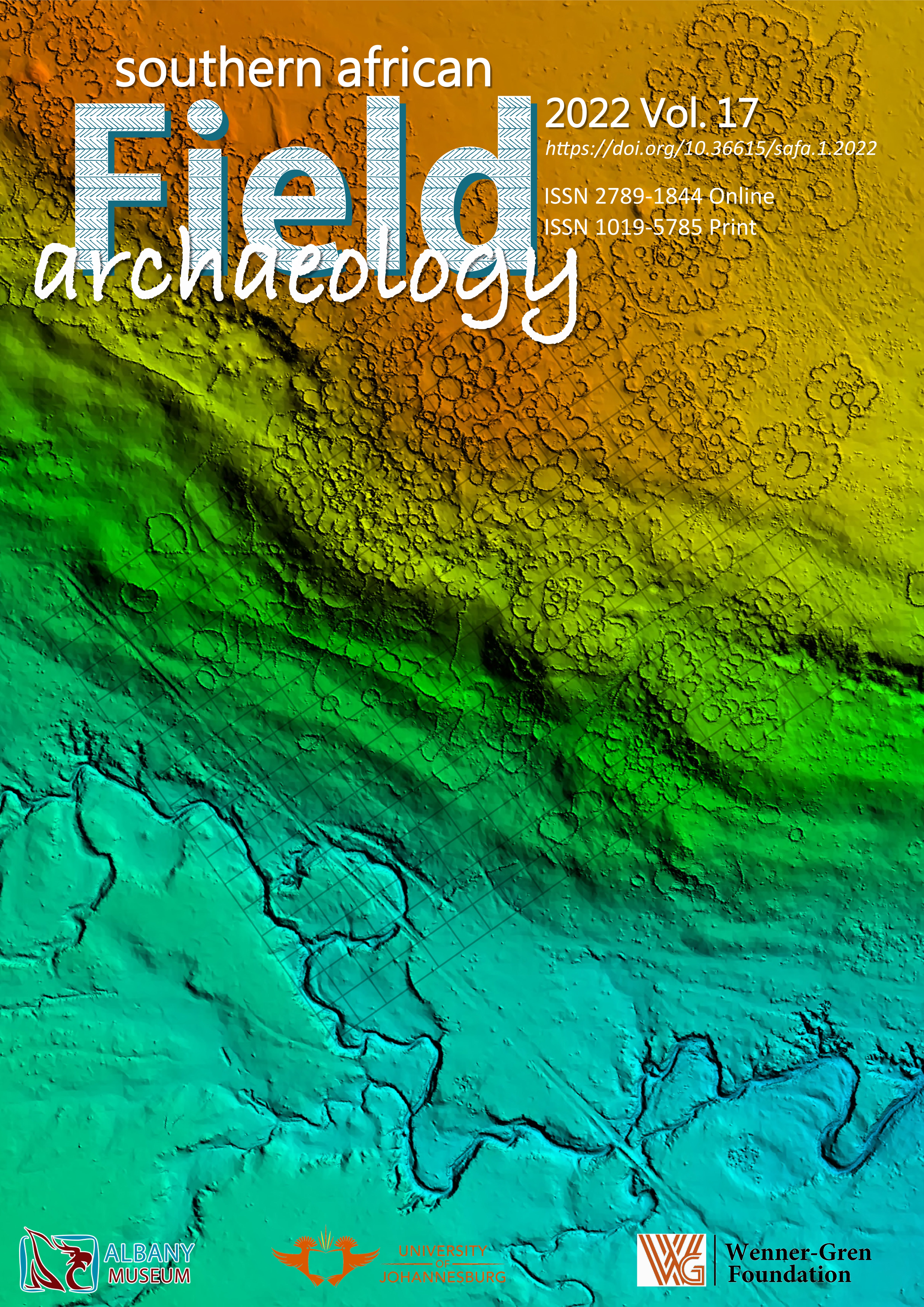Preliminary results from archaeological investigations at Sudwala Caves, Mpumalanga, South Africa
Main Article Content
Keywords
Sudwala Caves, farming communities, Bokoni
Abstract
People seldom used deep cave systems during the late Holocene in South Africa. Consequently, excavations were conducted in 2010 to establish the origins of artefacts found during tourist infrastructure developments at Sudwala Caves. These excavations focused on an area near the mouth of the cave where there was, what appeared to be, intact deposit. Four squares were excavated, bearing cultural remains that point to three use episodes. The first use episode, indicated by Marateng pottery, related to the people of Bokoni. The second, characterised by undecorated pottery, could be linked to Swazi speakers, who were known to have used the caves as a refuge during the 1800s. The third use episode, associated with historical objects, signified cave usage during the second half of the 20th century as a tourist attraction. Material culture removed from the caves during the development of tourism infrastructure, however, might point to a much longer use history.


